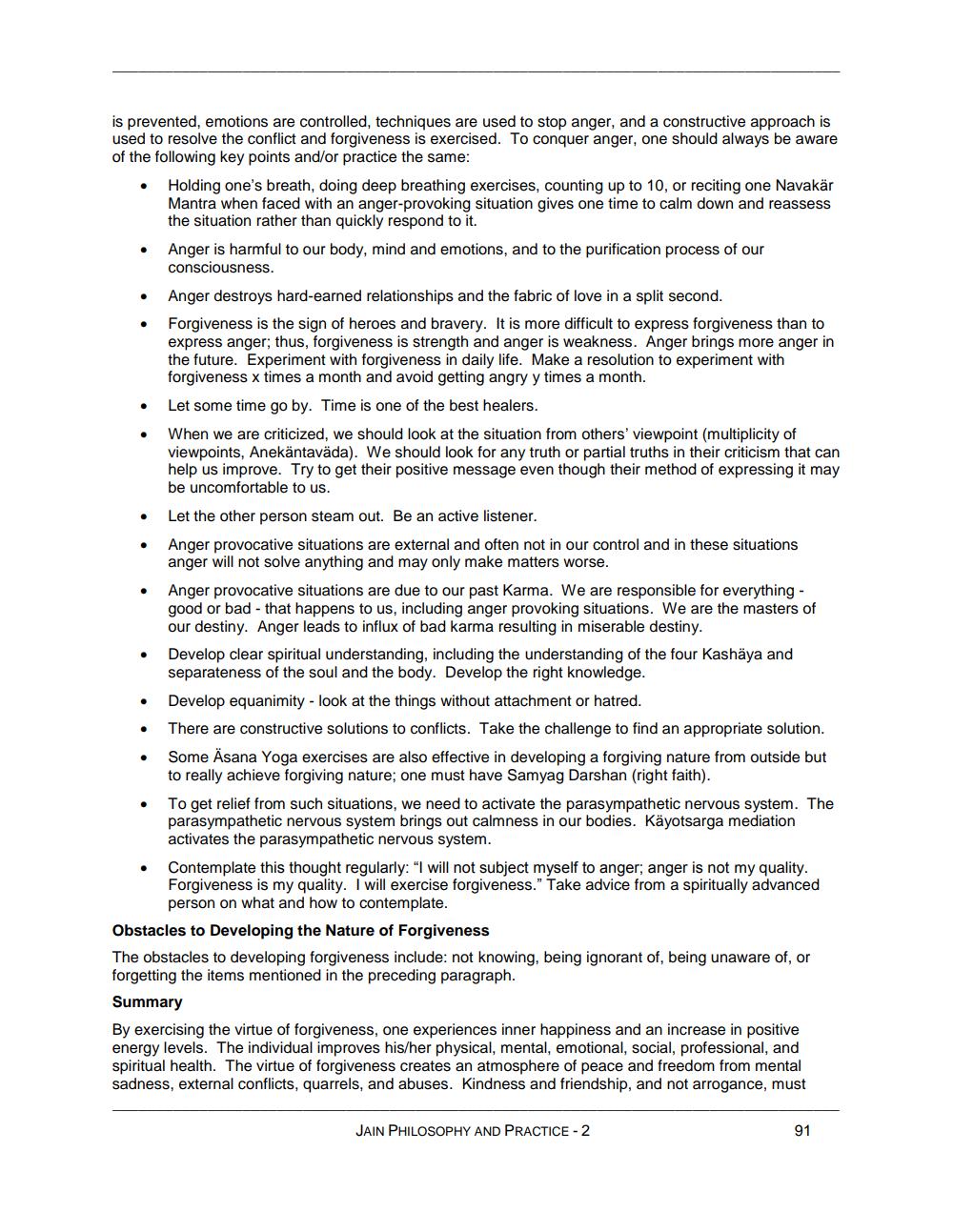________________
is prevented, emotions are controlled, techniques are used to stop anger, and a constructive approach is used to resolve the conflict and forgiveness is exercised. To conquer anger, one should always be aware of the following key points and/or practice the same:
Holding one's breath, doing deep breathing exercises, counting up to 10, or reciting one Navakär Mantra when faced with an anger-provoking situation gives one time to calm down and reassess the situation rather than quickly respond to it. Anger is harmful to our body, mind and emotions, and to the purification process of our consciousness. Anger destroys hard-earned relationships and the fabric of love in a split second. Forgiveness is the sign of heroes and bravery. It is more difficult to express forgiveness than to express anger; thus, forgiveness is strength and anger is weakness. Anger brings more anger in the future. Experiment with forgiveness in daily life. Make a resolution to experiment with forgiveness x times a month and avoid getting angry y times a month. Let some time go by. Time is one of the best healers. When we are criticized, we should look at the situation from others' viewpoint (multiplicity of viewpoints, Anekäntaväda). We should look for any truth or partial truths in their criticism that can help us improve. Try to get their positive message even though their method of expressing it may be uncomfortable to us. Let the other person steam out. Be an active listener. Anger provocative situations are external and often not in our control and in these situations anger will not solve anything and may only make matters worse. Anger provocative situations are due to our past Karma. We are responsible for everything - good or bad - that happens to us, including anger provoking situations. We are the masters of our destiny. Anger leads to influx of bad karma resulting in miserable destiny. Develop clear spiritual understanding, including the understanding of the four Kashaya and separateness of the soul and the body. Develop the right knowledge. Develop equanimity - look at the things without attachment or hatred. There are constructive solutions to conflicts. Take the challenge to find an appropriate solution. Some Äsana Yoga exercises are also effective in developing a forgiving nature from outside but to really achieve forgiving nature; one must have Samyag Darshan (right faith). To get relief from such situations, we need to activate the parasympathetic nervous system. The parasympathetic nervous system brings out calmness in our bodies. Käyotsarga mediation activates the parasympathetic nervous system. Contemplate this thought regularly: "I will not subject myself to anger; anger is not my quality. Forgiveness is my quality. I will exercise forgiveness." Take advice from a spiritually advanced
person on what and how to contemplate. Obstacles to Developing the Nature of Forgiveness The obstacles to developing forgiveness include: not knowing, being ignorant of, being unaware of, or forgetting the items mentioned in the preceding paragraph. Summary By exercising the virtue of forgiveness, one experiences inner happiness and an increase in positive energy levels. The individual improves his/her physical, mental, emotional, social, professional, and spiritual health. The virtue of forgiveness creates an atmosphere of peace and freedom from mental sadness, external conflicts, quarrels, and abuses. Kindness and friendship, and not arrogance, must
JAIN PHILOSOPHY AND PRACTICE -2
91




